Don't wanna be here? Send us removal request.
Text
Pre-Production: Week 5 Blog 4
Finishing up the pre-production document and the pitch presentation - A reflection
I finally finished the pre-production document for Project Xenomorph, which I have been working on for over a month now, and honestly, somewhere down the line, I realized that this wasn’t just about putting together a fancy doc; it was something more, a chance for me to geek out. I wanted it to feel like something that could exist in a proper studio pipeline. Every part of the Xenomite-X, from its AI-driven comms to its insect-inspired movement and modular armor, was designed to make sense in a grounded, believable way.
And right after wrapping up the doc, I jumped straight into building the pitch presentation. Since I only have 5 minutes to sell the idea, I had to strip everything back to just the essentials. I used the pre-prod doc as my base and built the slides to hit the key beats, such as what the world is, what the mech does, and why it matters. Instead of explaining every system, I focused on the big hooks: swarm logic, biomimicry, and the Reaper Railgun, and how this thing isn’t just a mech, it’s a living war machine shaped by nature and strategy.
The more I work on these projects, the more I realize they’re all connected. I’ve been slowly building this alternate reality. A version of our world broken by decades of war, corporate militaries, and environmental collapse. Something like Akira, but grounded in the present, not the future. So the visual tone isn’t neon or chrome; it’s more dieselpunk, brutal and dirty, full of patched-up tech and survival-first design. No smooth edges, just raw function and purpose.
The hoverbike from last semester, the F-15 Strike Eagle rework, and now Xenomite-X—they’re all part of this world I’m shaping in my head. Each project is another piece of that puzzle. I want to keep using my ArtStation portfolio to show how it all connects, and they are not just cool models but glimpses into this fractured timeline where humanity is still clawing its way forward through oil, rust, and steel.
Looking back, this project taught me a lot about restraints, both in design and in storytelling. It’s easy to throw in every cool idea or detail, but it’s harder (and more rewarding) to ask why something exists and how it serves the bigger picture. That mindset helped shape both the doc and the pitch, making sure every part of the mech and the world had purpose, not just style. I think that’s a habit I want to keep building on.
0 notes
Text
Pre-Production: Week 5 Blog 4
Maya-Zbrush-Substance workflow
To test my high-to-low poly workflow and get more comfortable with my pipeline, I modeled a small part of Xenomite-X’s leg and ran it through a full normal map baking process. This helped me understand how to get crisp, layered surface detail without actually increasing the mesh density, which is a huge win for optimization.
I started in Maya, building a clean, low-poly model with proper edge flow and quad-based topology. The aim was to keep it game-ready from the start. Then I exported it to ZBrush, where I used a combination of brushes like TrimDynamic, hPolish, DamStandard, and Orb Cracks to block out surface details like vents, armor grooves, and scuffed paneling. I focused on keeping the detail hierarchy clear, for example, big bevels and panel splits first, then finer wear and scratches layered over.
After that, I brought both high and low versions into Substance 3D Painter to bake the normals. I used a mid-range ray distance and tweaked the cage slightly to reduce artifacts around tight edges. The bake was clean overall and added a ton of depth and realism to the low-poly version, especially around the panel transitions. It was satisfying to see all that sculpted information transfer over so smoothly.

Fig: step-by-step breakdown of the entire process
Finally, I ran a lookdev render using Iray to preview the material pass. Even without final texturing, the baked detail gave a much more grounded and believable feel. This test made it clear that my pipeline is working and will scale well for the full mech, especially for complex armor parts, where using actual geometry would be too expensive.
0 notes
Text
Pre-Production: Week 5 Blog 3
some more topology practice I tried to maximise the use of my time by doing as many topology studies as possible


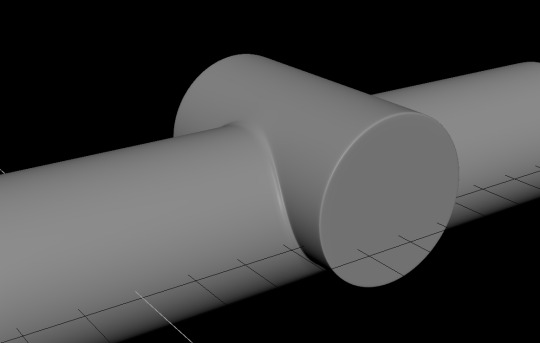

Fig; Topology study intersecting pipes

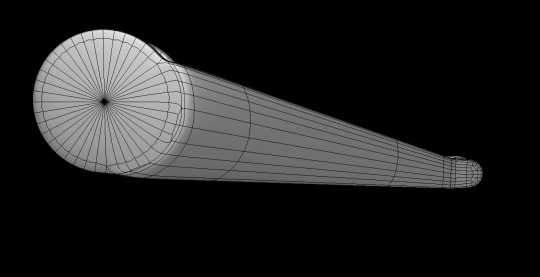
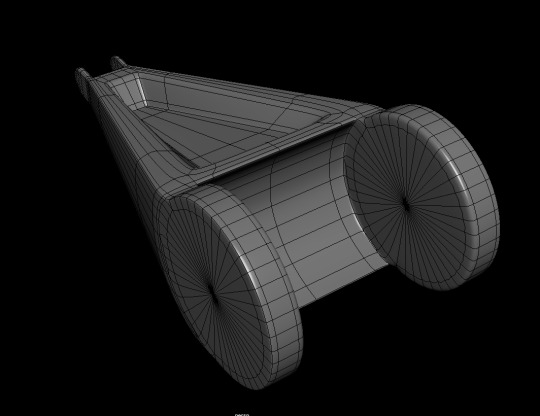
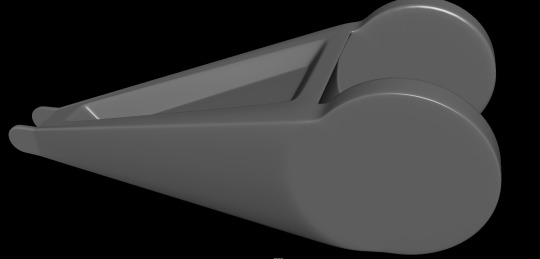
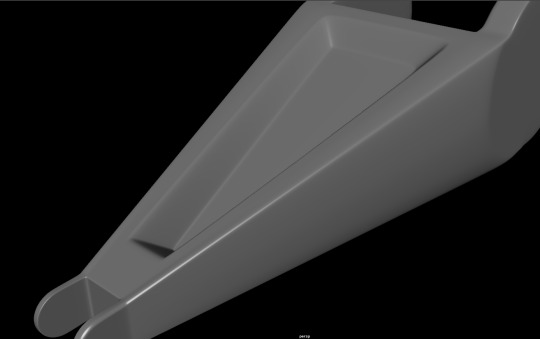
Fig; Topology study mechanical joint
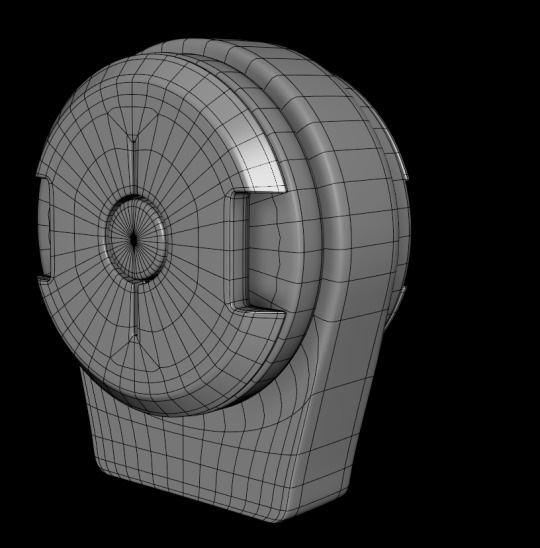
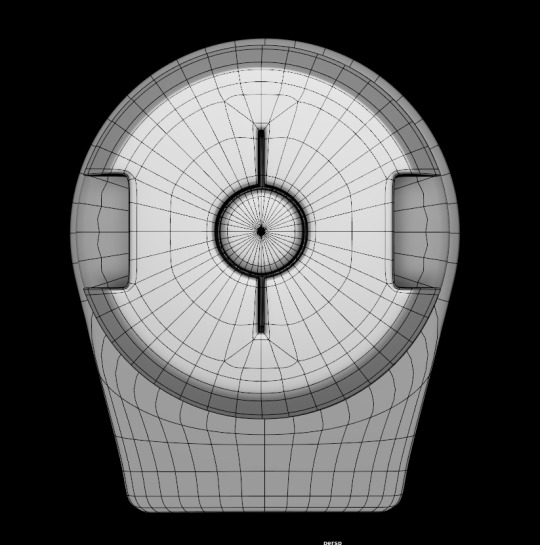
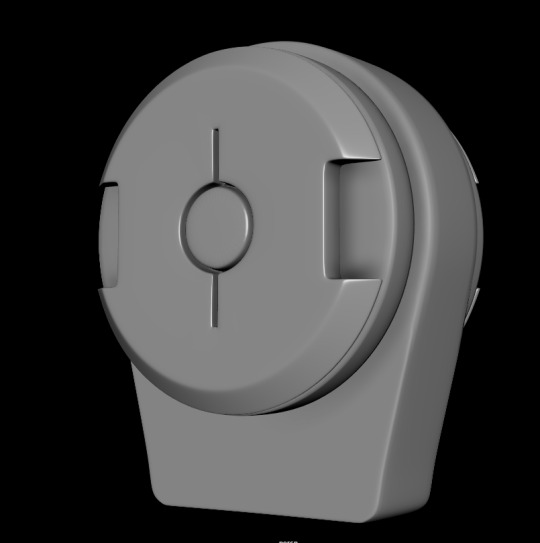

Fig; Topology study sci-fi element
0 notes
Text
Pre-Production: Week 5 Blog 2
More topology studies This topology study was a bit different from my other ones because for this I started with a cube instead of a sphere because I wanted to tackle the pinching on the poles. | I subdivided the cube until I had enough subdivisions and then started the boolean operation, and after which I cleaned up the mesh flow using knife cut tool.

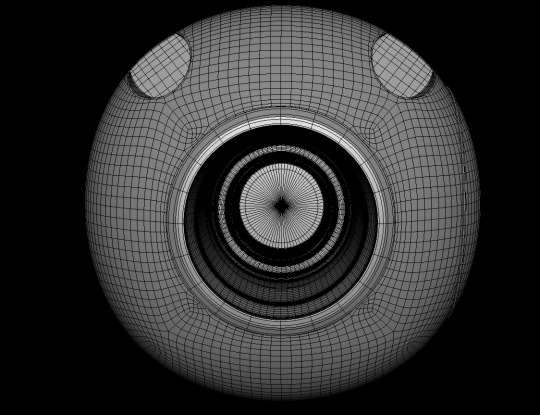
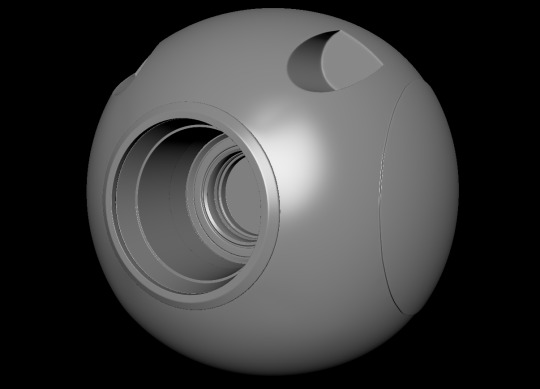

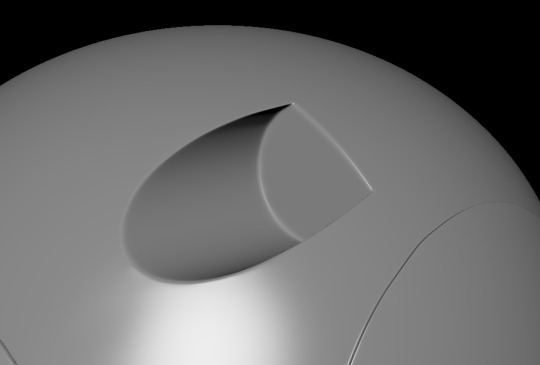
0 notes
Text
Pre-Production: Week 5 Blog 1
Exploring relevant practices; pt-5
While researching the pipeline for my project and the Gantt Chart, I came across an insanely detailed breakdown titled "Making T-90A Tank in Blender & Substance 3D Painter" on 80.lv by Konstantin Yadevich, where he recreates a real-time T-90A tank using Blender, ZBrush, Marmoset, and Substance Painter. And even though this was published on 14 December 2021, which is technically past the assignment cut-off, I genuinely think it's still highly relevant. Especially for my own project, being a military-grade anti-personnel mech inspired by insect anatomy and modern war machines.
Another reason I consider this breakdown a legit learning tool is that it was published on 80.lv, which is a highly respected industry platform that curates high-quality workflows, breakdowns, and project showcases from professional artists across AAA studios, indie devs, and freelancers alike.
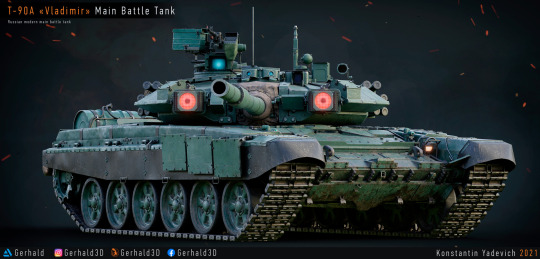
Fig; Konstantin Yadevich's T-90 main battle tank; Yadevich, K. (2021) High-poly model of T-90A tank [Image]. 80.lv. Available at: https://cdn.80.lv/api/upload/content/6c/images/61b1f110cb4f0/widen_920x0.jpg (Accessed: 21 April 2025).
Modeling Structure
His modeling pipeline is something I’ll adapt, especially since I’m working in Maya instead of Blender. The steps still track:
Blockout → Mid-poly → High-poly (with SubDiv or sculpting) → Final low-poly → UV → Baking → Texturing Simple, solid, and efficient.
I’ll translate that directly into Maya by using Quad Draw and crease sets instead of Blender's support loops and Ctrl+2 subsurf tricks. But the general discipline of creating detailed mid-poly drafts before deciding what gets sculpted or baked? That’s gold. Especially for areas like Xenomite’s exo-plate armor or multi-jointed limbs, where I want to push realism and surface breakup.
UV Strategy
His UV method isn’t just technically clean, it’s smart. I never thought about texel density that way. For Xenomite-X, I’ll now plan for higher resolution on focal areas, and lower res on things like the underside or non-visible mechanics. He also uses overlapping UVs with AO-awareness, which I hadn’t fully considered before.
I'll be using Maya’s UV Toolkit for this, but the theory behind the decision-making is what’s valuable.
Baking & Grouping
I used to wing my baking, but Konstantin’s technique of grouping high and low poly meshes meticulously and naming them for Marmoset’s QuickLoader is something I’m stealing immediately. Even though I bake in Substance 3D Painter, proper grouping and naming will help me avoid the constant rebaking pain. Plus, his trick with dummy geometry to fake shadow occlusion for animatable parts (like turrets) is also a really good takeaway.
Material Logic & Detail Passes
The breakdown on texturing is where this project really shines. Konstantin layers materials like a real-life paint job: base metal, primer, and paint, each treated with wear and tear. He adds variation even within the same color (4 tints of green!), which stops it from looking gamey or repetitive. For Xenomite, I’ll do the same: something like layered chipped anti-rust metal, worn enamel, synthetic rubber, and soft-fabric wraps around its exposed hydraulics.
He also doesn’t over-rely on generators. There’s a lot of manual pass work at the end: leaks, dirt streaks, and decals, and this is where personality comes in. That kind of storytelling through texture is what will make Xenomite-X feel like it’s actually been through war.
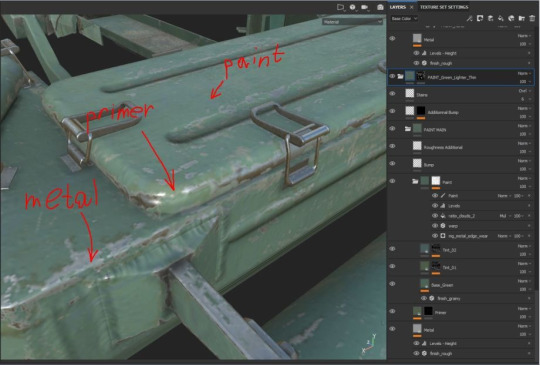
Fig; Konstantin Yadevich's material Breakdown; Yadevich, K. (2021) UV layout and texel density optimization for T-90A tank [Image]. 80.lv. Available at: https://cdn.80.lv/api/upload/content/0e/images/61b1ec6d16bb9/widen_920x0.jpg (Accessed: 21 April 2025).
Final Thoughts
So yeah, to conclude, I know the breakdown is from 2021, but it honestly still holds up as one of the most complete and useful references I’ve found. It directly informs my workflow, improves the realism of the concept, and pushes me toward a more professional, game-ready pipeline. And again, because it was featured on 80.lv, it’s not just some hobbyist blog — it reflects a level of industry quality I want to hit.
And finally, this isn’t just about copying cool tanks, it’s about learning to build something believable from the ground up. And for a mechanical death ant like Xenomite-X, that’s exactly what I need.
References:
Yadevich, K. (2021). Making T-90A Tank in Blender & Substance 3D Painter. 80 Level. Retrieved from https://80.lv/articles/making-t-90a-tank-in-blender-substance-3d-painter/
0 notes
Text
Pre-Production: Week 4 Blog 3
Shape Language Breakdown
During my final class presentation, Neil asked me if it might be a good practice to explore the shape language of this concept. So I started looking at various sources, YouTube videos, studio papers, etc., and I realized that design is communication, and shape is its vocabulary.
When I was asked to do a breakdown of the form of Xenomite-X, I wasn't just thinking about a futuristic war machine; I was shaping a visual narrative. I started seeing that every curve, angle, and break in the silhouette was chosen to reflect not just utility but also attitude. This wasn’t about a mech that looked cool; it was about creating a presence that felt inevitable, grounded, and intelligent.
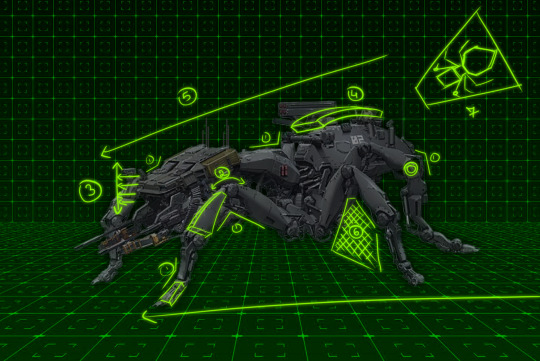
Fig; The shape language breakdown of Xenomite-X

Fig; The shape language breakdown page of my preproduction document
Obtuse Angles: Composed Aggression
I found that at the heart of Xenomite-X’s silhouette are obtuse angles, particularly in the torso and limbs. These wide, confident angles help the mech appear grounded and unbothered. The stance of a predator that knows it’s dominant. In shape language, such forms convey calm power and stability, drawing directly from visual storytelling principles where broader angles often indicate relaxed confidence (Walt Disney Family Museum, 2020).
Unified Form Flow
The mech's key components, like the turret, cockpit, and legs, are designed with smooth flow transitions, creating the impression of a single integrated entity rather than modular parts bolted together. This helps eliminate visual clutter and establishes cohesion, much like character design that avoids overly segmented silhouettes for clarity and strength (Sinix Design, 2020). It feels more like a creature than a machine.
Weapon Tips as Visual Termination Points
I noticed that the places where the flow breaks, for example, at the weapon tips, are intentional. Sniper barrels and rocket pods interrupt the smooth lines with sharp edges, creating visual impact zones. This technique mirrors how sudden angular interruptions can draw the eye and suggest danger, similar to how sharp teeth or claws are used in creature design to communicate lethality (Sinix Design, 2020).
Contrast: Curved vs Angular
Another thing is that throughout the Xenomite-X, I noticed contrasts between curved plating and angular detail. Curves convey protection and mass, like armor plating, while angular forms around joints and weapons imply articulation and offensive precision. This kind of contrast is crucial for communicating multiple layers of character in one silhouette, which is a principle often used in animated villains who mix soft silhouettes with dangerous detail (Walt Disney Family Museum, 2020).
Forward-Leaning Posture
The mech has a low-slung front and raised rear, which gives it a posture that’s always pressing forward, like it’s about to strike. This staging draws inspiration from animal predators but also applies Disney’s principles of directional force, which is the idea that a pose should convey intent even in stillness (Walt Disney Family Museum, 2020).
Negative Space for Breath and Scale
There's also ample negative space between limbs that allows the viewer’s eye to breathe, while also enhancing the mech’s sense of scale. This follows shape theory practices where carefully controlled gaps help prevent a silhouette from feeling overly dense or unreadable, which is a common tactic in large character or prop design (Sinix Design, 2020).
Hierarchy of Forms
Finally, the silhouette obeys a deliberate form hierarchy: heavier, less detailed rear forms transition into a compact, intricate front. This visually guides the viewer from the “brain” to the “bite”, subtly suggesting both intelligence and threat. In shape design, directing visual flow this way is a powerful storytelling method, leading the eye through narrative beats embedded in form alone (Sinix Design, 2020).
Reference
Sinix Design, 2020. Design Theory: Shape Appeal. [video] YouTube. Available at: https://www.youtube.com/watch?v=P6yJO9gKSAI [Accessed 16 Apr. 2025].
Walt Disney Family Museum. (2020) Tinker and Talk: Shape Language. Available at: https://www.waltdisney.org/sites/default/files/2020-04/T%26T_ShapeLang_v9.pdf (Accessed: 15 April 2025).
0 notes
Text
Pre-Production: Week 4 Blog 2
Topology study
This is just me doing more topology studies from the references I find on the internet.
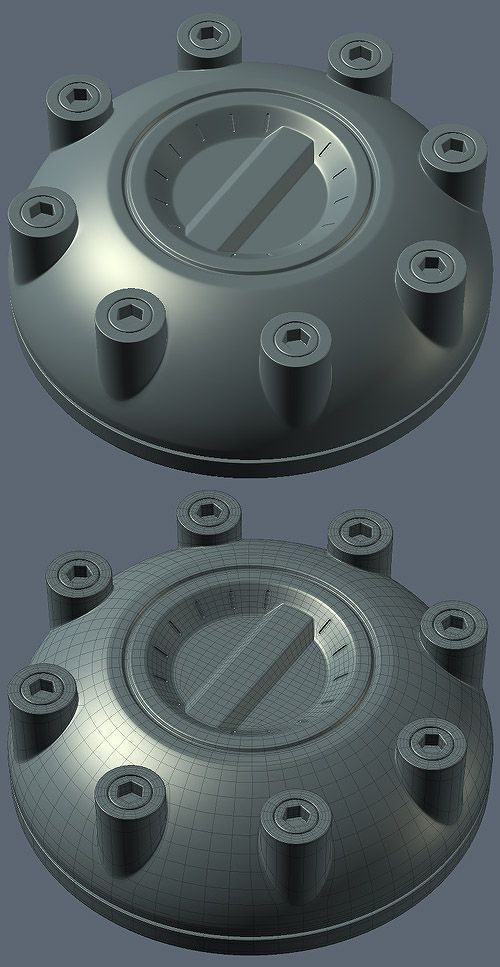
Fig; The topology study Reference. Whiteblaizer.com, Untitled image. [image] Available at: https://i.pinimg.com/736x/e3/e4/f0/e3e4f0fee0bc5ac6d5c062637dedd2f7.jpg [Accessed 15 Apr. 2025].
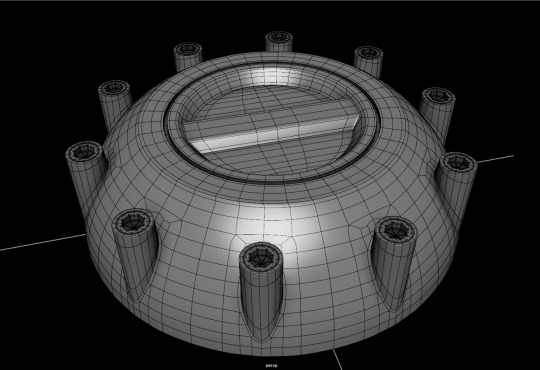

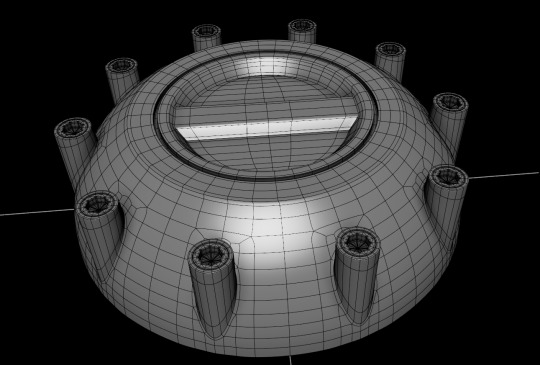
Fig; Renders from my topology practice
0 notes
Text
Pre Production: Week 4 Blog 1;
Exploring puddles in substance painter
While experimenting with material effects for Xenomite-X, I came across a fun and super useful tutorial titled Puddle of Blood by 3bisset (2025). It showed a really clean and efficient way to create layered blood effects in Substance 3D Painter, which can easily be adapted for things like oil spills, grime pools, or battlefield gore depending on the project.
instagram
Vid; 3bisset (2025) Puddle of Blood. ArtStation Learning. Available at: https://www.artstation.com/learning/courses [Accessed 13 April 2025].
The method involves stacking two fill layers with different properties: one for the thinner, drier blood and one for the darker, heavier puddles. Using particle brushes and masks makes the layering really natural and random, which helps avoid that fake, repeated texture look. A small but important trick I learned was adjusting the blending modes for the Height and Normal channels properly to get the puddle effect looking right.


Fig; My rendition of the blood puddle.
This workflow really opened my mind to how flexible Fill and Mask systems can be for creating detailed storytelling materials. I definitely plan to use a similar layering approach for creating things like battlefield oil stains and blood pools around Xenomite units, helping add subtle narrative elements to the final renders.
0 notes
Text
Pre Production: Week 4 Blog 2;
Relevant Practices; pt-4
As part of strengthening my hard-surface modeling workflow for the Xenomite-X project, I started learning the applications of ZBrush’s ZModeler toolset by following the tutorial Hard Surface Basics | ZBrush Tutorial by Abe Leal 3D (Leal, 2023). This tutorial gave me a solid starting point for understanding how non-organic sculpting works in ZBrush.
youtube
Vid; Leal, A. (2023) Hard Surface Basics | ZBrush Tutorial. YouTube. Available at: https://www.youtube.com/watch?v=8NuBEM8vBcw [Accessed 13 April 2025].
It focused heavily on core tools like booleans, IMM primitives, extrude, knife masking, stamp brushes, and supporting edge creation. What I really found useful was how Abe stressed building up mechanical designs using a primary to secondary to tertiary detailing flow. It made me realize how important it is to get the big shapes locked in first before worrying about the small stuff.
The tutorial ended with creating a sci-fi medikit, which I followed along step-by-step. It helped me get a much better grasp on handling complex surface transitions, setting up clean cuts, and planning out base shapes properly for future detailing or baking workflows. Another thing I picked up was the smart use of IMM primitives early in the design stage to speed up form development instead of trying to sculpt everything from scratch. Plus, learning how to use the Knife Curve tool properly for planned panel cuts is going to save me so much time while keeping my designs clean.


Fig; The medikit I made by following Abe Lead3D's tutorial
Overall, this tutorial helped me not just pick up technical tricks but also think differently about building hard surface models in a modular, production-ready way. Definitely something I plan to apply when blocking out the Xenomite-X and future mechanical designs.
1 note
·
View note
Text
Pre Production: Week 4 Blog 1;
Working on the Design Document - The cockpit
While developing the Xenomite-X project, one of my primary goals was to design a cockpit that felt both tactically credible and technologically advanced. To achieve this, I envision the Xenomite-X cockpit as a deliberate blend between the compact, armored functionality of modern tank interiors and the sophisticated avionics of heavy-lift aircraft like the Lockheed Martin C-130J Super Hercules (Lockheed Martin, 2023).
Modern tanks such as the M1A2 Abrams and the Challenger 2 emphasize minimalism, modularity, and protection in their crew compartments. Control systems are often ruggedized, with tactile buttons and redundant manual overrides to ensure survivability under extreme battlefield conditions (U.S. Army, 2024). This philosophy deeply informs the Xenomite-X design: robust, independent control stations for the pilot and commander, reinforced with kinetic impact-resistant frameworks and emergency backup pathways.
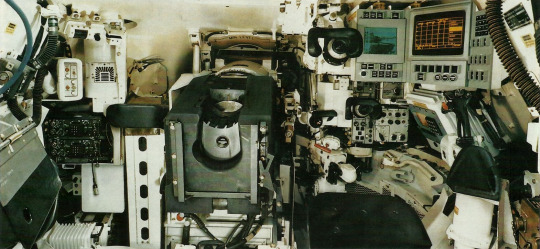
Fig; The interior of a modern M1A2 Abrams main battle tank, PJF Military Collection, A member of the 24th Infantry Division, Fort Stewart, GA, shown performing his duties in the interior of an M1 Abrams Tank. [image] Available at: https://sakhalianet.x10.mx/militaryhistory/images/low_res/tanks_united_states/m1a2_abrams_interior_01.jpg [Accessed 12 Apr. 2025].
At the same time, heavy-lift aircraft like the C-130J offer a different kind of influence — situational awareness and network-centric command systems (Lockheed Martin, 2023). The C-130J cockpit features advanced multi-function displays (MFDs), HUDs (heads-up displays), and integrated communications suites that allow pilots to manage complex logistics, navigation, and tactical operations simultaneously. Similarly, Xenomite-X’s cockpit integrates augmented reality overlays, decentralized AI communication (HiveSynch), and multi-layered threat detection systems to create a battlefield hub rather than just a driving compartment.

Fig; The cockpit of a Lockheed Martin C-130J. JetPhotos, Lockheed Martin C-130J-30 Hercules Cockpit. [image] Available at: https://cdn.jetphotos.com/full/6/25361_1611274186.jpg [Accessed 12 Apr. 2025].
By merging these two fields, the resilient battlefield engineering of tanks and the tactical multi-role flexibility of heavy lift aircraft, I aim to create a cockpit that feels uniquely believable. It will allow the Xenomite-X to function not only as an assault unit but as a mobile command node, capable of managing swarm tactics, electronic warfare, and adaptive mission profiles from within a single mechanized platform.

Fig; The cockpit page of Xenomite-X.
This hybrid approach reflects trends in modern military vehicle design, where multi-domain operations increasingly require platforms that can think, communicate, and survive as active parts of a networked battlefield.
Bibliography
Chen, L., "ANT" Walking Mech. [image] Posted 2 years ago. Available at: https://cdna.artstation.com/p/assets/images/images/062/106/405/4k/longque-chen-sketches-mine-ant-v020.jpg?1682370346 [Accessed 12 Apr. 2025].
Huynh, A.-L., Batwing Interior. [image] Posted 2 years ago. Available at: https://cdna.artstation.com/p/assets/images/images/059/213/162/4k/andre-lang-huynh-batwing-cockpit-v04j-845461796.jpg?1675881876 [Accessed 10 Apr. 2025].
Lockheed Martin (2023) C-130J Super Hercules Fact Sheet. Available at: https://www.lockheedmartin.com/en-us/products/c130.html [Accessed 12 April 2025].
Poulsen, R., Supersonic Bomber. [image] Posted 2 months ago. Available at: https://cdna.artstation.com/p/assets/images/images/085/452/466/large/rasmus-poulsen-supersonic-bomber-01-txt.jpg?1740825664 [Accessed 10 Apr. 2025].
U.S. Army (2024) M1A2 Abrams Tank Specifications and Systems Overview. Available at: https://www.army.mil/armoredforces/abrams/ [Accessed 12 April 2025].
0 notes
Text
Pre Production: Week 3 Blog 6;
Topology study
I found this revolver thingie on Pinterest and I figured it would be a nice, quick exercise. It was also helpful because I had a wireframe layout to reference from in this study.

Fig; the revolver cylinde, Abdullah, S., Revolver Cylinder. [image] Available at: https://i.pinimg.com/736x/e7/0f/70/e70f70cc3ef115846819f7761a2df188.jpg [Accessed 12 Apr. 2025].
This is how my model turned out.

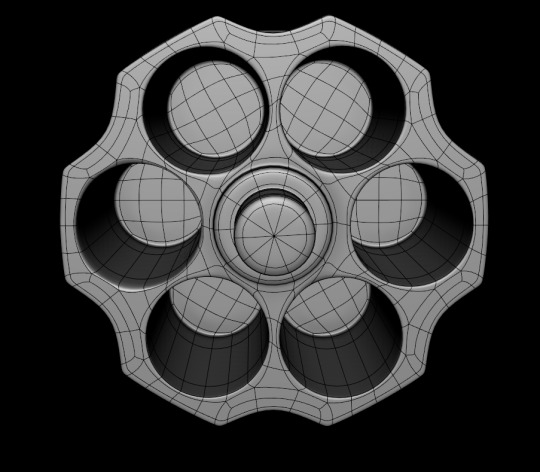
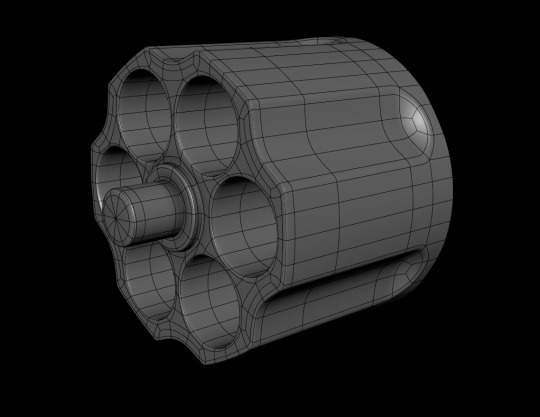
Fig; Viewport renders from my practice
0 notes
Text
Pre Production: Week 3 Blog 5;
Relevant Practice, pt 3 :– Jannis Mayr’s Mastery of Visual Storytelling
So, one of the key aspects of photorealism is lighting, and in my pursuit to enhance not just the mechanical realism but also the emotional weight of my designs, I have been greatly inspired by the work of Jannis Mayr, who is a Senior Concept Artist and Designer.
His portfolio (Mayr, 2024) is the perfect example and a case study for cinematic storytelling through environment and hard-surface design.
Mayr's recent pieces, such as the "Araneon MKII" mech and "AXIOM - Mobile HQ", immediately caught my attention for their powerful use of lighting and visual storytelling. His ability to sculpt mood through subtle environmental haze, diegetic lighting on vehicles, and deliberate color palettes resonates deeply with the kind of atmosphere I want to infuse into the Xenomite-X project. The play between harsh industrial forms and soft, ambient environmental effects, such as dust storms or dimly lit hangars, creates a feeling of lived-in realism that extends beyond simple surface detail.

Mayr, J., AXIOM - Mobile HQ. [image] Posted 11 months ago. Available at: https://cdnb.artstation.com/p/assets/images/images/076/953/419/4k/jannis-mayr-mobile-hq-01-jannis-mayr.jpg?1718206505 [Accessed 10 Apr. 2025].
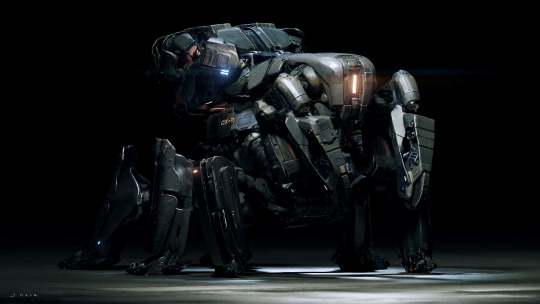
Mayr, J., Araneon MKII. [image] Posted 4 months ago. Available at: https://cdna.artstation.com/p/assets/images/images/083/396/818/4k/jannis-mayr-spidermech-sketch-01.jpg?1735825486 [Accessed 10 Apr. 2025].
What stands out most is Mayr’s ability to make even static mechanical subjects feel alive. Through controlled rim lights, glowing internal panels, and the strategic framing of humans against towering machines, his artworks narrate themes of scale, resilience, and isolation without a single word of exposition. This cinematic layering approach directly influences how I plan to stage my final Xenomite-X renders — using dynamic lighting to not only showcase the form but to hint at the larger world it inhabits.
Incorporating lessons from Mayr’s work, I intend to focus much more on environmental integration and narrative lighting in my final presentation. Rather than presenting the mech as a static asset, I aim to embed it into a scene that communicates tension, history, and purpose — following the example set by leading contemporary concept artists like Mayr.
Bibliography
Mayr, J. (2024) Jannis Mayr – Portfolio. ArtStation. Available at: https://www.artstation.com/joblyn [Accessed 28 April 2025].
0 notes
Text
Pre Production: Week 3 Blog 4;
Creating Dynamic Tactics for the Xenomite-X
In designing the Xenomite-X, ants were my obvious design inspiration, but I wanted to go beyond just the looks. I wanted to integrate the very essence of their nature into my project.
Now, despite their individual simplicity, ants can perform complex tasks like hunting or defending their colony through decentralized communication and cooperation. I wanted the Xenomite-X’s battle tactics to reflect this same swarm intelligence, strategy, flexibility, and adaptability, much like how ants operate in nature.
To make this idea more grounded and believable, I decided to create custom battle formations for the Xenomite-X. I began by studying swarm drone tactics and existing tank formations, blending both to suit the Xenomite-X’s needs. The result is a formation that can rapidly adjust to the battlefield, acting like a unified entity while still maintaining the autonomy of individual units.
I found the Centurion tank layout from the 1980s particularly useful for this. Known for its strong lines of sight and backup communication channels (Orbat85, 2023), the Centurion layout served as the perfect inspiration. The Xenomite-X adopts a similar structure, where each unit supports the others, covering blind spots and coordinating tactics in real time, much like a swarm.

Fig; The Centurion layout Orbat85.nl, 2025. TK Bat Painf Brig. [online] Available at: https://www.orbat85.nl/images/tkbat-painfbrig.gif [Accessed 6 April 2025].
Given the Xenomite-X’s integration with the HiveSynch LAN network, these tactics are enhanced by the seamless data-sharing between units. The result is fast, adaptive decision-making, with each unit able to react quickly to threats while remaining part of a cohesive force. Tactics like encirclement, electronic camouflage, and man-unmanned teaming allow the Xenomite-X to constantly reshape its strategy, much like a dynamic swarm responding to changing circumstances.
By combining the efficiency of swarm intelligence with proven tank strategies and integrating them with the HiveSynch network, the Xenomite-X becomes a force capable of adapting on the fly, making it unpredictable and hard to counter.
Bibliography
Orbat85, 2023. Tank battalion and brigade organization and equipment. [online] Available at: https://www.orbat85.nl/reference/unit-organisation-and-equipment.html#tkbat-pabrig [Accessed 6 April 2025].
0 notes
Text
Pre Production: Week 3 Blog 3;
More Topology
Since my major project is heavily reliant on modeling, topology is naturally the part of the project that I am allocating the most time to
I decided to make this robot arm by combining different complex shapes together.
I got the basic shape using booleans, and then I used the knife cut tool to clean up the edge flows. This method is called the Boolean-subdivision workflow.





Fig: The mechanical arm for my topology exercise.
0 notes
Text
Pre Production: Week 3 Blog 2;
Relevant Practice, pt 2
As someone whos always looking to push the boundaries of my texturing skills, I recently discovered a YouTube video titled "How to create a rust effect with streaks using Substance 3D Painter", by Wes McDermott (2022) that showcased a technique I found incredibly promising. It demonstrated how to create a dynamic and highly detailed procedural rust effect in Substance Painter. This technique seemed to be directly aligned with current trends in digital art and 3D modeling, particularly when it comes to procedural workflows and the efficient use of texturing tools like Substance Painter. With digital texturing playing a significant role in video games, film production, and industrial design, staying on top of such techniques is crucial to refine my practice and keep up with industry standards.
youtube
Vid; How to create a rust effect with streaks using Substance 3D Painter by McDermott, W., 2022. How to create a rust effect with streaks using Substance 3D Painter. [video] Available at: https://www.youtube.com/watch?v=B-4j6G-rdjA [Accessed 2 April 2025].
The process starts with a yellow fill layer for the base, a color that roughly resembles rust. This is then followed by a modified "Blur Slope" filter that creates a dripping effect. Then Anchor points are used to preserve the initial rust strokes, ensuring consistency across the layers.
As the effect builds, layers are added to create inner streaks of rust, giving the texture more depth. Then the rust material from the default Substance Painter shelf is applied to the color and height channels. The video recommends using a custom texture, but I digress. The material is then confined to the painted areas using another anchor point. The edges are refined with noise textures and filters, creating a jagged, corroded look. Finally, bubbling and cracking effects are added using noise fills, making the rust feel aged and degraded.
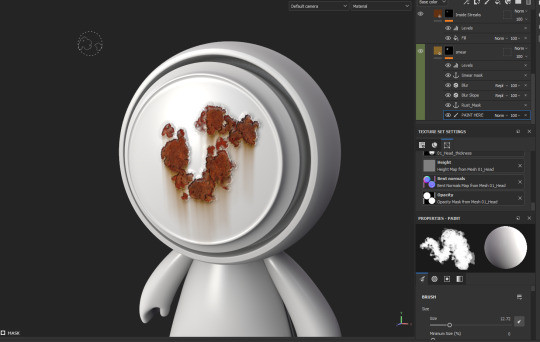
Fig; The smeared rust effect, as a part of my experimentation
What stood out to me was how flexible this method is; just by reusing anchor points and masks, you can easily apply the same effect to different layers, creating a streamlined and efficient workflow. The final texture is then organized into a smart material, ready for reuse in other projects.
This video opened my eyes to the potential of procedural texturing in creating highly detailed and dynamic surfaces. The techniques demonstrated align with current trends in the field and will undoubtedly enhance my own work, especially in developing the Xenomite-X. By integrating these methods, I can create textures that are not only visually compelling but also efficient and adaptable for future projects.
Bibliography
McDermott, W., 2022. How to create a rust effect with streaks using Substance 3D Painter. [video] Available at: https://www.youtube.com/watch?v=B-4j6G-rdjA [Accessed 2 April 2025].
0 notes
Text
Pre Production: Week 3 Blog 1;
Giving life to Xenomite X
One of the biggest feedbacks I got from Neil after I initially presented my idea was that, he found the entire biomimicry aspect of this project quite fascinating and so he wanted me to integrate biomimicry into the workings of Xenomite X as well, not just in the design.
For example, how ants use pheromones or acids as an offensive tactic—I can take inspiration from that and do something like a smoke screen vent. And this was a really interesting feedback because it allowed me to nerd out on how arthropods work. And this is the diagram I came up with.
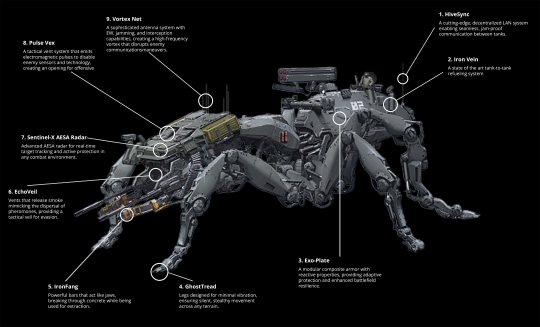
Fig; The diagram showing how different aspects of Xenomite-X is inspired by arthropods.
Breakdown
Depending on their specific use, different antennas are positioned at various points of a vehicle to optimize performance. For instance, the AESA radar on an F-35 is mounted on the aircraft's nose for forward-focused targeting, whereas Electronic Warfare (EW) systems, which require comprehensive 360-degree coverage, have antennas integrated into the wing leading edges and other parts of the airframe. This design approach, exemplified by the F-35's AN/ASQ-239 system, enhances efficiency, minimizes interference, and maximizes overall system performance (Covert Cabal, 2019). I applied the same principle to the Xenomite-X by physically separating and strategically placing electronic warfare and communication systems for optimal effectiveness. The HiveSynch (1) communications suite is mounted at the rear, enabling secure real-time data transfer and coordinating up to 200 networked units. Meanwhile, the head houses the Sentinel-X AESA Radar (7), Pulse Vex jamming system (8), and VortexNet (9) antennas, each positioned to maximize tracking, jamming, and networking capabilities. This modular layout allows the Xenomite-X to perform complex operations without internal interference, ensuring superior battlefield awareness, swarm coordination, and multi-target engagement.
Iron Vein I chose to keep diesel as the primary fuel for the Xenomite-X because, just like the M1 Abrams tank, diesel adds an extra layer of defense against kinetic and explosive attacks (Real Engineering, 2023). It is not just a power source but a part of the mech’s survivability. To support this choice, I designed and integrated Iron Vein (2), a mobile refueling system inspired by in-flight refueling (IFR) technology. Iron Vein allows the Xenomite-X to refuel mid-operation without needing to return to static refueling points, maintaining hyper-mobility, endurance, and swarm-based tactics on the battlefield. By making Iron Vein a standard part of every unit, the Xenomite-X can act as its own mobile fuel network, dynamically redistributing fuel across the formation. The AI-driven management system I incorporated continuously monitors fuel levels, automatically coordinating refueling between units even in the middle of combat. This approach removes the need for vulnerable supply convoys, keeps the swarm operational for longer periods, and ensures the Xenomite-X can adapt to the fluid demands of modern mechanized warfare.
Exo Plate The next design choice for the Xenomite-X was directly inspired by the exoskeletons of ants. Ants use a layered, lightweight, and incredibly strong shell to survive harsh environments while maintaining flexibility and mobility, a natural design I wanted to replicate mechanically. This led to the development of ExoPlate (3), a next-generation modular composite armor system. While drawing inspiration from nature, I also incorporated real-world military advancements, such as the Chobham armor of the M1A2 Abrams and the modular protection systems of the Leopard 2 and Challenger 2 main battle tanks. ExoPlate integrates multi-layered composites, ceramic plating, and reactive elements to counter both kinetic and explosive threats effectively. Like modern Explosive Reactive Armor (ERA), ExoPlate’s reactive layers dissipate incoming energy, significantly reducing penetration damage. Stealth coatings and radar-absorbing materials, similar to those used in the Armata T-14’s Malachit ERA, further reduce detection and enhance survivability. Its modular structure allows for rapid armor replacements and mission-specific customization, ensuring that Xenomite-X units can adapt to different battlefield conditions while maintaining superior defense. By combining natural evolution with cutting-edge military technology, ExoPlate gives the Xenomite-X a perfect balance of durability, flexibility, and battlefield adaptability..
Bibliography
Covert Cabal (2019). Electronic Warfare - The Unseen Battlefield. [YouTube video]. Available at: https://www.youtube.com/watch?v=fBLHZwEXKeA (Accessed: 28 March 2025).
Real Engineering (2023) The insane engineering of the M1 Abrams. YouTube video, 22 April. Available at: https://www.youtube.com/watch?v=NR5pWBy-6Fk (Accessed: 30 March 2025).
0 notes
Text
Pre Production: Week 2 Blog 6;
Hard-surface modeling - ZBrush
One of the things I have always struggled with is ZBrush, so when Neil and Eden suggested I try it during this time allocated for experimentation, I was sure!
So I started following this video tutorial series titled "Hard Surface Modeling with Zbrush" by Isaac Oster.
youtube
Vid; Oster, I. (2021) Hard Surface Modeling with Zbrush 01 - Zmodeler. 19 August. Available at: https://www.youtube.com/watch?v=JOTroMEQFYU (Accessed: 31 March 2025).
And this was a very good starting point as it introduced me to Zmodeler, which is a very powerful hardsurface modeling tool in Zbrush.
I learnt to use all the basic modeling operations like extrude, booleans, edge loops etc. It also showed how to use masking, knif cut tool and stamp brush.
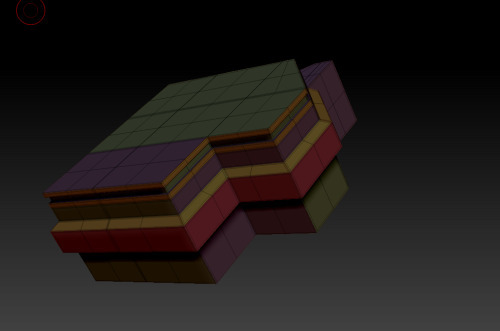


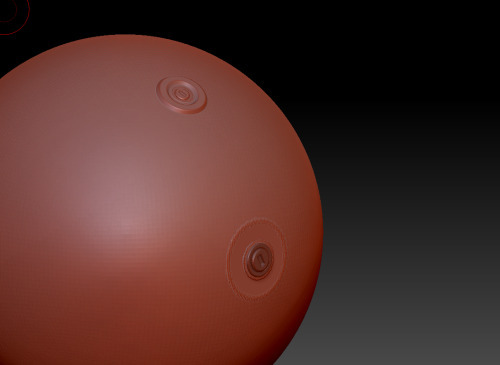
Fig; Experiments with different Zbrush tools
0 notes